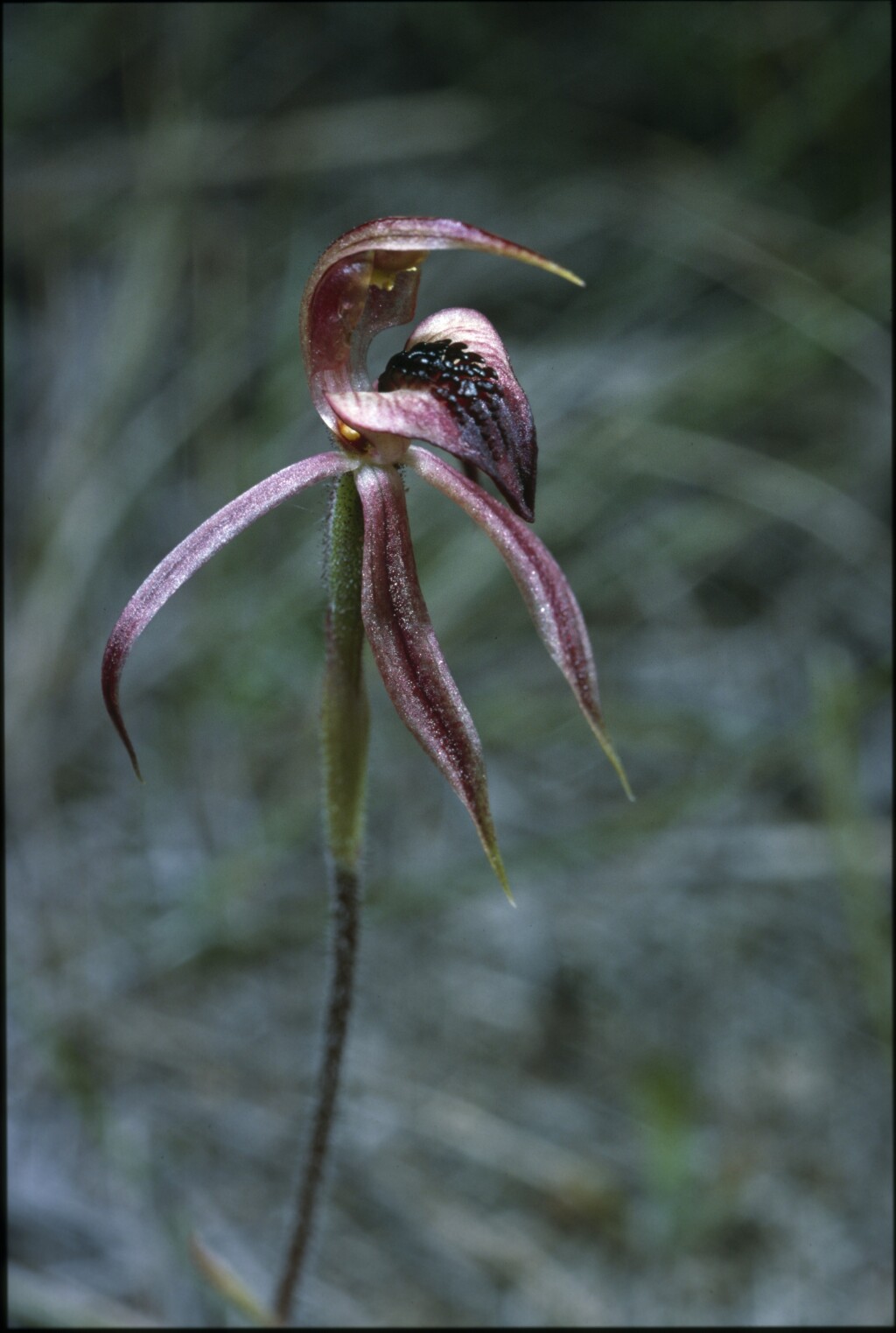Caladenia tessellata
Fitzg.Flowering plant 8–15 cm tall. Leaf 5–10 cm long, 4–9 mm wide, sometimes dotted red at base. Flowers 1 or 2 (rarely 3); perianth segments 1.5–2.5 cm long, yellowish green with red stripes and suffusions; dorsal sepal 2–3 mm wide, erect or recurved; lateral sepals 3–5 mm wide, deflexed, more or less parallel, asymmetrically lanceolate, sometimes abruptly acuminate; petals 1.5–2 mm wide, deflexed, similar to sepals but narrower. Labellum curved forwards, cordate, 3-lobed, 8–10 mm long and 8–10 mm wide (when flattened), cream to greenish, often with a maroon apex, lateral lobes more or less flat or curved slightly upwards, tip deflexed or slightly decurved; margins thickened and dark brown around mid-lobe, usually with a few short teeth at base of mid-lobe; lamina calli in 4 or 6 crowded rows, often breaking up distally and 2 rows extending to within 1–2 mm of labellum apex, stout and club-shaped, fleshy, dark-coloured. Flowers Sep.–Oct.
GipP, OtP, EGL, EGU, WPro. Apparently confined to eastern Victoria from near-coastal heathy woodlands to open forests on well-drained sandy soils.
For comments on the similarity of C. tessellata to C. cardiochila see note under the latter species.
Caladenia tessellata hybridizes with C. orientalis yielding the named hybrid C. ×variabilis.
 Spinning
Spinning

